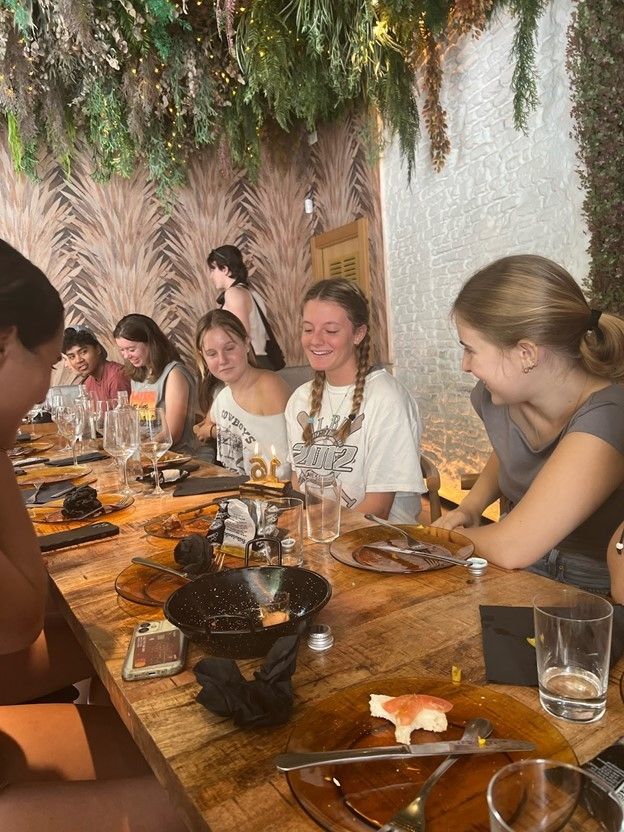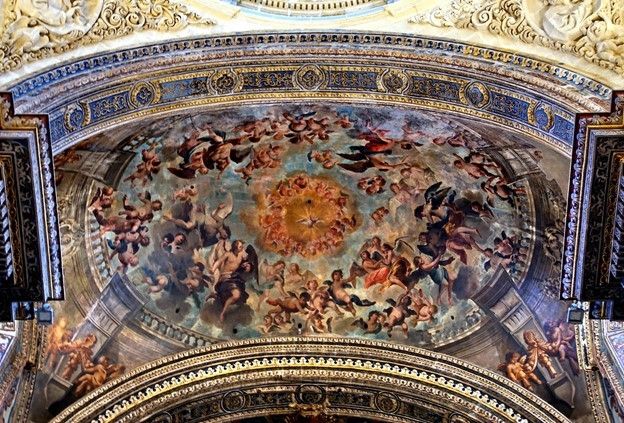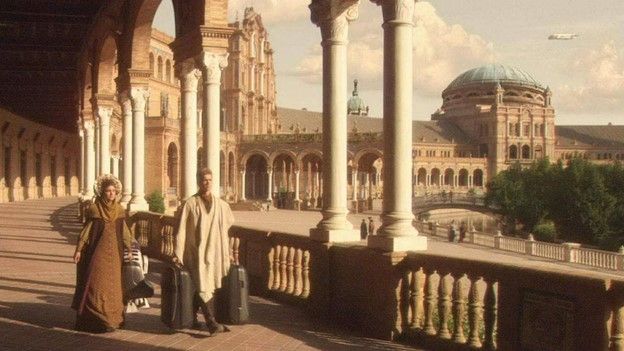A guide to Seville through the lens of art and culture
Written by: Zoe Houk
Welcome to Seville, Spain, the capital of Andalucía. Seville is a city filled with rich culture, art, music, food, and history. From the famous flamenco dancers to gambas and paella Seville is the assemblage of hundreds of years of cultures integrating. When I arrived here I was surprised by how deep the culture runs in every area of locals' daily lives. To me, one of the most fascinating and important things to do in one's life is to learn about cultures that are foreign to our own. In an effort to do this, I have begun to teach myself about the rich traditions of Seville in regards to art, food, music, and more. In this blog, I will share some of what I find to be the most interesting examples of Seville’s cultures and traditions.
Firstly, one of the most prominent parts of Seville that reflects this deep history is the architecture. Throughout many, many years the assimilation of architectural influences from the ancient Egyptian empire, the old Greeks, Ancient Rome, the Middle Ages, and the renaissance era has created a unique and beautiful city. Seville shows the story of architecture from hundreds of years ago through the present with grand cathedrals, cobblestone streets, decorated plazas, and vast bridges. One of my favorite activities to do is to walk through the old streets because it feels as if I am walking through years of history told through beautiful buildings. There are many incredible monuments and places that stand out as some of the most beautiful constructions in the world, but to me there are three places that stand out as truly reflecting the architectural identity and history of Seville.
La Plaza de España, or in English the Square of Spain, is possibly the most famous monument on my list. Created in 1929 by Aníbal Gonzalez, the Plaza de España has become one of the biggest attractions in Seville to both tourists and locals alike. I love this monument because I feel that it speaks to every aspect of Seville’s artistic culture. The main building of the plaza combines the influence of Renaissance and gothic architecture to create a very traditional Spanish style called regionalism architecture. Within the plaza, there is a grand fountain and the main plot is decorated with traditional sevillana azulejos, a type of ceramic tile very important to the artistic culture of Seville. This beautiful square is often home to free live performances of traditional flamenco music and dancing. However, for me, an avid fan of the cinema, what really sets it apart is its connection to many important movies such as the 2002 cinematic phenomena Star Wars: Attack of the Clones and the wildly popular TV series Game of Thrones. To learn more visit the Seville City Guide linked here.
El Metropol Parasol, more commonly called Las Setas, is the newest and most controversial building on my list. Built in 2010 this large wooden structure is an example of modern architectural wonder. Among locals the creation of this very modern building in the center of the old city is a very contentious topic, however it is a must-see destination. I agree with many that the location is unfortunate but I also am in awe of this architectural marvel and how it is an incredible example of the more modern parts of the city. Not only is this grand structure entirely made of wood, but the view from the top allows you to see all parts of the city from its green parks to its tallest towers. To learn more visit the Setas Site linked here.
The final location on my list is The Church of Divine Salvador. The construction of this church began in 1674 and was completed in 1712. This building was built in place of an ancient Roman monument and maintains many of those ancient roots. The interior of this grand building is filled with ornate touches of gold and a lavish center altar. The interior and exterior of this grand building hold great historical, cultural, and religious significance to the people of Sevilla and beyond. To me, this might be the most interesting monument on my list because of the great significance it holds to many different people from religious to artistic groups. This gorgeous structure details the incredible artistic, historical, and architectural elements of this great city. To learn more about its history and significance visit the Seville city guide linked here.
Beyond the architecture of Spain there is rich culture in many other areas. My favorite thing to explore in Seville is the great importance of food. I have found that the diets and eating schedules of my host family are among the most jarring differences I have faced since beginning my European lifestyle. The biggest difference I have had to become accustomed to is that in Spain lunch or almuerzo is considered the most important meal of the day. Almuerzo is often served around 2 or 3 in the afternoon and is a big family meal. Before lunch it is normal to eat a small breakfast around 12 and after a small dinner around 9. Many people also eat small snacks called meriendas. This has been vastly different from the common schedule in the United States and probably one of the largest adjustments I have made to my life here. That is not to say that it is not incredible. During my first month here I have had the opportunity to eat some of what have become my favorite foods for the first time. I have three dishes that stand out to me as “the taste of Seville”. Each of these three dishes are traditional to Andalucía and are normally eaten for lunch or almuerzo.
The first dish that I have come to love is Paella. This is probably the most famous Spanish dish across the world, and in my opinion it is not overrated. Paella is a large dish that consists of rice spiced with saffron mixed with vegetables, seafood, or meat. Sometimes it has all these ingredients, sometimes only one, but the more the merrier! It is traditionally cooked in a large shallow pan and served to large amounts of people. My favorite thing about this dish is that it can be accommodating to all different diets from raging carnivores to vegans and everyone in between. No matter what, it is a delicious lunch.
The next dish that I eat most often is the Tortilla Española. In Spain, omelets, wraps, quiche, wheat tortillas, pancakes, and corn tortillas are all called tortillas; however, the Tortilla Española is very traditional to Seville and is the most common form of tortilla. This dish is made of eggs and potatoes cooked in a hot pan with olive oil to make a sort of potato and egg cake. Oftentimes people will add ham, olives, peppers, onions, tuna, or something more to the basic tortilla. Once cooked it can be served solo or with a sauce. My favorite way to eat this meal is with tomate frito, another Spanish cooking staple. For many days after this dish is cooked it can be put in sandwiches or wraps for a quick snack or dinner. This is the dish I eat most commonly and enjoy every time.
The final meal that is very traditional in Spain is Patas con pimientos. This dish makes my favorite Spanish food list for a different reason than the other two. Similar to the first two foods it is a very traditional lunch in Andalucía, however unlike the others it is not as new to me. This common dish reminds me more of how I eat at home. Hot potatoes baked with onions, peppers, and olive oil and topped with thyme and oregano. This dish smells and tastes like a cozy morning at home and for this reason, it might be my favorite dish in Spain. It brings the feel of home and the taste of Spain together in a perfect way which remedies my homesickness.
It is difficult to write about all the cultures I have encountered in my short time here. There is so much I will be unable to share in only one blog post, but for my last topic, I feel that it is important to talk about the deep-rooted traditions of Sevillian culture. I have witnessed some of the most beautiful dances and had the opportunity to see some incredible artwork that holds incredible significance to the people and families of Sevilla.
The first tradition that is deeply important to the culture of Seville is flamenco. Flamenco is both a form of dance and music. It can be performed solo or between two women or between a man and a woman. It is a very emotional performing art where people use movement and sound to tell the story of love, hate, happiness, and sadness. I think it is one of the most intimate and emotional things I have seen. Often performed in extravagant skirts and floral decorated hair this art is performed in small streets and grand theaters alike, and is a staple to the Sevillian culture.
The next very important form of artistic culture in Seville is the traditional Azulejos. These are a form of ceramic tile traditionally made in Andalucía. These tiles are painted with a single blue color and carved from white clay. My favorite thing about the Azulejos is their simple beauty. Everywhere I walk from small allies to the plaza de España, Azulejos decorate the walls and bring subtle beauty to wherever they are placed. I hope to one day learn how to paint these traditional artworks.
The last tradition that I have had the opportunity to take part in is La Feria de Naciones. This is a fair that lasts throughout all of October and is located near the center of Seville. It is a place where people bring food, art, and culture from all over the world together to represent their country. When I visited I had incredible churros from Madrid, and tacos from Mexico. I played a traditional street game from Thailand, and bought jewelry from the Canary Islands. Though this is a representation of many cultures, and not specifically Seville, I thought it deserved a mention. I live in a small town outside of Portland, Maine, where it is not as common to see such a natural celebration of so many different cultures in one place. The opportunity to experience this blend is one I will never forget. I think this yearly tradition is a beautiful testament to the city's view and respect of all cultures.
In the end, there are hundreds more pieces of culture that are so important to Seville that I don't have room to share in this blog. There are also so many aspects of the culture here I won't have the opportunity to experience. However, I feel that this list summarizes my brief experience here. From my favorite places to food, and my favorite traditions, Seville is a beautiful city that is very different from my home and yet equally as incredible in vastly different forms. I am glad I get to write about my experience here so far, and I cannot wait to take part in many more examples of Sevillian cultures and traditions in my next four months here. In my opinion, Seville is one of the most beautiful cities I have seen. Much of the art, traditions, food, and culture here have been passed down through many centuries, which is different from some other big cities I have visited in the United States. For example, my favorite city in the United States, New York, has a lot of deep culture that is newer and more modern. To me, the older traditions are much more fascinating to me because it shows a whole new world filled with ancient lives. The rich history of Seville really tells me a story that I love to listen to, and I feel so lucky to be living here.
Related Posts
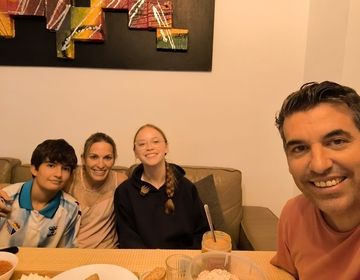
How Studying Abroad Changed My Life
This post is student written by Beatrix D. who participated in an High School Abroad Fall Trimester in Spain! I never quite imagined myself eating tomato and garlic rubbed on... keep reading
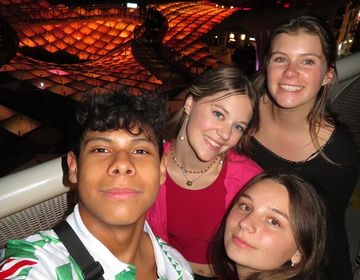
How My High School Semester Abroad Has Helped Me Become Multilingual
This post was written by CIEE Global Navigator alum Fiona K. from Massachusetts who participated in the Global Navigator Marketing Internship in spring of 2025. "Stand up if you are... keep reading
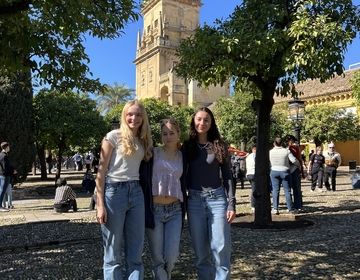
Why I Left My Small Town in Alaska to Attend High School in Seville
This post was written by CIEE Global Navigator alum Makena D. from Alaska who participated in the Global Navigator Marketing Internship in spring of 2025. Living in a new city... keep reading
